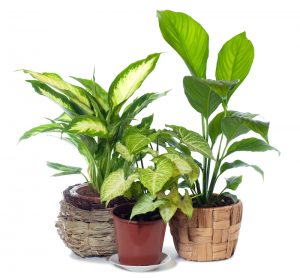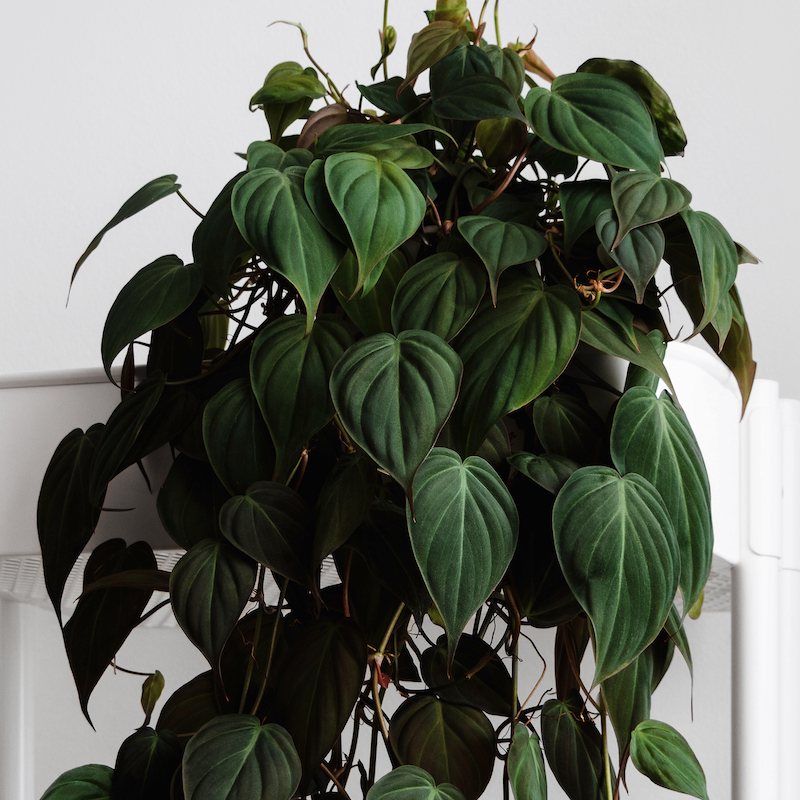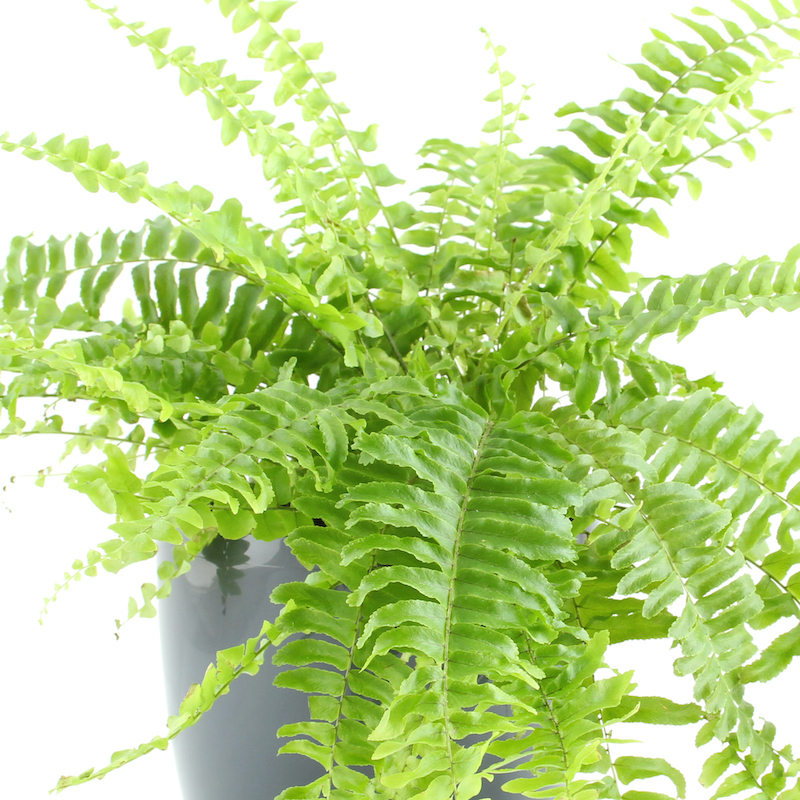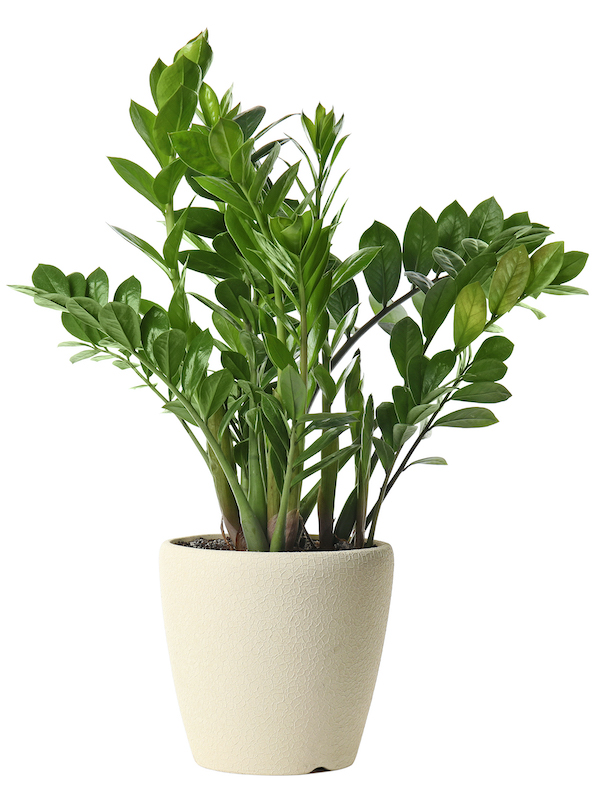Fast Growing
House Plants

Brighten your home with some beautiful fast growing house plants and grow your own urban jungle. Nurturing and caring for your house plants and watching them grow in response to your loving attention provides a great distraction from the busyness of life.
The joy of seeing new leaves appearing is very rewarding for the young and old alike, and is great for boosting one’s gardening confidence!
When you are choosing the best plants for your home you need to consider how much light, water and nutrients they will require. If you’re a beginning gardener, some plants are much hardier and easier to care for than others, they’re great plants to get started with. It’s not uncommon to lose a plant here or there, overwatering is often the culprit, but it helps to start with a plant that will be easier to care for and be able to survive a little neglect, or over-loving. If you are new to indoor gardening, here are a couple of our favorite fast growing house plant collections to get your started.
Our Top Fast Growing House Plants
Golden Pothos
A great house plant for the beginner due to its hardy nature and vigorous growth. Beautiful as a hanging basket, draped along shelves or get creative and spread it over a wall for some uniques wall art. The golden pothos is very low maintenance and easy to propagate.

Swiss Cheese Plant
A beautiful statement plant for a spacious room! The large, glossy, dark green leaves develop the cut edges as they mature, creating the characteristic leaf shape that is so well recognised. To create ideal growing conditions a cool-mist humidifier can be used to increase the humidity and wiping the leaves with a damp cloth will keep them dust free. The Monstera likes to be in a brightly lit room with indirect or filtered light rather than direct sunlight.
Peace Lily
A gorgeous indoor plant with lush green leaves and striking white flowers. It grows well in medium to bright, filtered light and produces vigorous growth. This plant is great for beginners as watering is easy. Just watch the leaves and they will droop as the soil dries out, signalling it’s time to water.

Heartleaf Philodendron
The lovely glossy, green, heart-shaped leaves of the philodendron make a beautiful climbing or trailing plant that will grow best in bright, indirect light (avoid direct sunlight) but will also tolerate low light (although growth may be slower) and fluorescent light. To create a fuller plant the leaf tips can be pinched off just above a node to encourage new growth to branch out.

Fiddle Leaf Fig
(Ficus lyrata)
Fiddle leaf figs are so dramatic and provide a beautiful statement plant in your home. They have become a very popular house plant in recent years and love to grow in a place with bright, filtered light. It’s advisable to turn them regularly to encourage uniform growth. They don’t handle low light conditions well at all and getting the balance right with watering can be tricky in the beginning. Leaves dropping can be a sign of overwatering or underwatering but they are fairly hardy and will bounce back from underwatering better than from overwatering.
Spider Plant
A gorgeous indoor plant with lush green leaves and striking white flowers. It grows well in medium to bright, filtered light and produces vigorous growth. This plant is great for beginners as watering is easy. Just watch the leaves and they will droop as the soil dries out, signalling it’s time to water.

English Ivy
(Hedera helix)
English ivy is a fast growing house plant that has the additional benefit of being on NASA’s list of top air purifying plants. Great for the home and office. The variegated English ivy requires moderate light levels whilst the green-leafed variety can grow in lower light, however its growth won’t be as fast. The more light the faster the growth will be, and the more the air is purified. To encourage a bushier plant prune the tips. The trailing branches are lovely in hanging pots or can be trained to climb a moss stake for a more upright version.

Chinese Money Plant
(Pilea peperomioides)
A beautiful house plant, with lovely bright green, round leaves that seem to float in the air. Pilea will be happy in a bright, well-lit place (best to avoid direct sunlight) but it won’t cope with low light conditions. When you get the conditions right this truly is a fast growing house plant and is also easy to propagate so you can share it with friends or have it all around the house! A great plant for the beginner and more experienced indoor gardener. It’s growth will slow in winter so water it less, just to keep the soil moist and don’t be worried if a couple of leaves drop off.

Boston Fern
(Nephrolepis exaltata)
The Boston fern is a popular house plant for a number of reasons. It’s attractive, lush green fronds provide air purifying benefits, although it isn’t a fan of smoke or draughts. It’s one of the easier ferns to care for and is relatively cheap to purchase. Because it likes a higher humidity, this is a great plant to try in the bathroom. It will tolerate lower light levels but does do better with more moderate light.
Slower Growers, but they live long
Snake Plant
A gorgeous indoor plant with lush green leaves and striking white flowers. It grows well in medium to bright, filtered light and produces vigorous growth. This plant is great for beginners as watering is easy. Just watch the leaves and they will droop as the soil dries out, signalling it’s time to water.

Zanzibar Gem
…
And those that are just beautiful!

Stromanthe Tricolor
The strikingly colored leaves of Stromanthe make it a beautiful house plant for your urban jungle. Direct sunlight may burn the leaves but bright, indirect light will help to enhance the leaf color. These beauties love a more humid environment so if you have a well-lit bathroom, this could be a great plant to choose. You can also increase the humidity by misting the leaves.

Chinese Evergreen
…

...
…
Tips For Healthy Fast Growing House Plants
Hopefully you have found some inspiration for your home to add beautiful house plants to bring nature inside. Some general care tips that might be helpful:
- Don’t overwater your house plants, soggy soil will encourage root rot for most house plants.
- Water with room temperature water.
- Ensure to pot your plants in a well-draining potting mix in a pot with holes for drainage.
- Be careful with self-watering pots as they can result in waterlogged soil without you realising it.
- When repotting house plants, find a pot that is just a bit bigger than the existing one, use fresh potting mix, and it won’t need feeding for the first 3 months.
- You can restrict the size of some house plants by limiting the pot size and cutting back on the feeding.
- Large leafy plants in smaller pots will require more water than smaller plants because they have more leaves to photosynthesise.
- Generally reduce the water during winter, plants grow less and therefore require less water.
- Fertilizer is usually only needed during the growing months of spring and summer.
- Plants that are toxic will usually taste bad to pets.
A soil moisture meter can be a very helpful tool to help take the guesswork out of watering your plants. If you are interested to learn more about caring for your fast growing house plants, you might find our Guide To Taking Care Of Indoor Plants helpful.

The Benefits Of Fast Growing House Plants
Not all plants grow at the same rate. Some plants in ideal conditions will grow quickly, doubling in size and outgrowing their pots in no time, whilst others, even if they are given ideal conditions will grow at a slower rate. This can be useful information to know when you are buying plants for your home. Do you want something that you can buy large for a particular space and know it won’t outgrow that space, or do you love to watch the new leaves regularly sprouting?
Buy Smaller, Cheaper Plants
One of the main benefits of fast growing house plants is that you can buy smaller, cheaper plants. If you provide them with the right conditions they will soon catch up to the more expensive, larger sized plants in nurseries.
Better Air Purification
Many houseplants have the potential to be great air purifiers. The more leaves they have, the more they will photosynthesise and the more oxygen they will be producing. There are specific houseplants that have been identified by NASA as being valuable air filters in that they can remove common volatile organic compounds from the air. Investing in fast growing house plants that are also great air purifiers may have the desired effect of helping to purify the air in your home.
Plant Propagation
If you enjoy plant propagation, having fast growing houseplants means you may need to be pruning and cutting your plants back. And for many plants, those leaves and stems you prune back can be grown into new plants. Perfect for creating that urban jungle you’ve been longing for or sharing with friends and family.
An important thing to remember is that many plants have a growing season and a resting season. Usually in the warmer months plants are ready to grow and if given sufficient light, water and the odd fertilizer, they will reward you with new growth each year. During the resting season, it’s important to give your plants a rest. Stop the fertilizer and cut back on the watering.
Finding The Right Fast Growing House Plants
The size of plant you like to buy, your budget and where you want to keep your plant will all affect the plant you end up choosing. The goal here is not necessarily to have the largest plant with trailing vines or leaves stretching skyward, but to have healthy houseplants that you enjoy and that are thriving in your home.
We are excited to have selected our favourite fast growing house plants, and others, for you to begin your urban jungle. Many of these plants are also nearly indestructible house plants.
All indoor plants do require light for photosynthesis. It is important to find the right light for your house plants. Some plants are more tolerant of low light conditions than others, think about the floor in the rainforest and plants that would thrive there. Some plants are able to grow quite happily under fluorescent lighting. Plants in low light may not grow as fast as those in bright, indirect light, but they can always be helped along by LED grow lights if you have a particular plant you really want to grow in a particular spot and the light isn’t quite right.
We hope you find plants you love and information to keep your house plants alive and thriving. Click the Plant Care Guide for further detailed information. Enjoy browsing!







